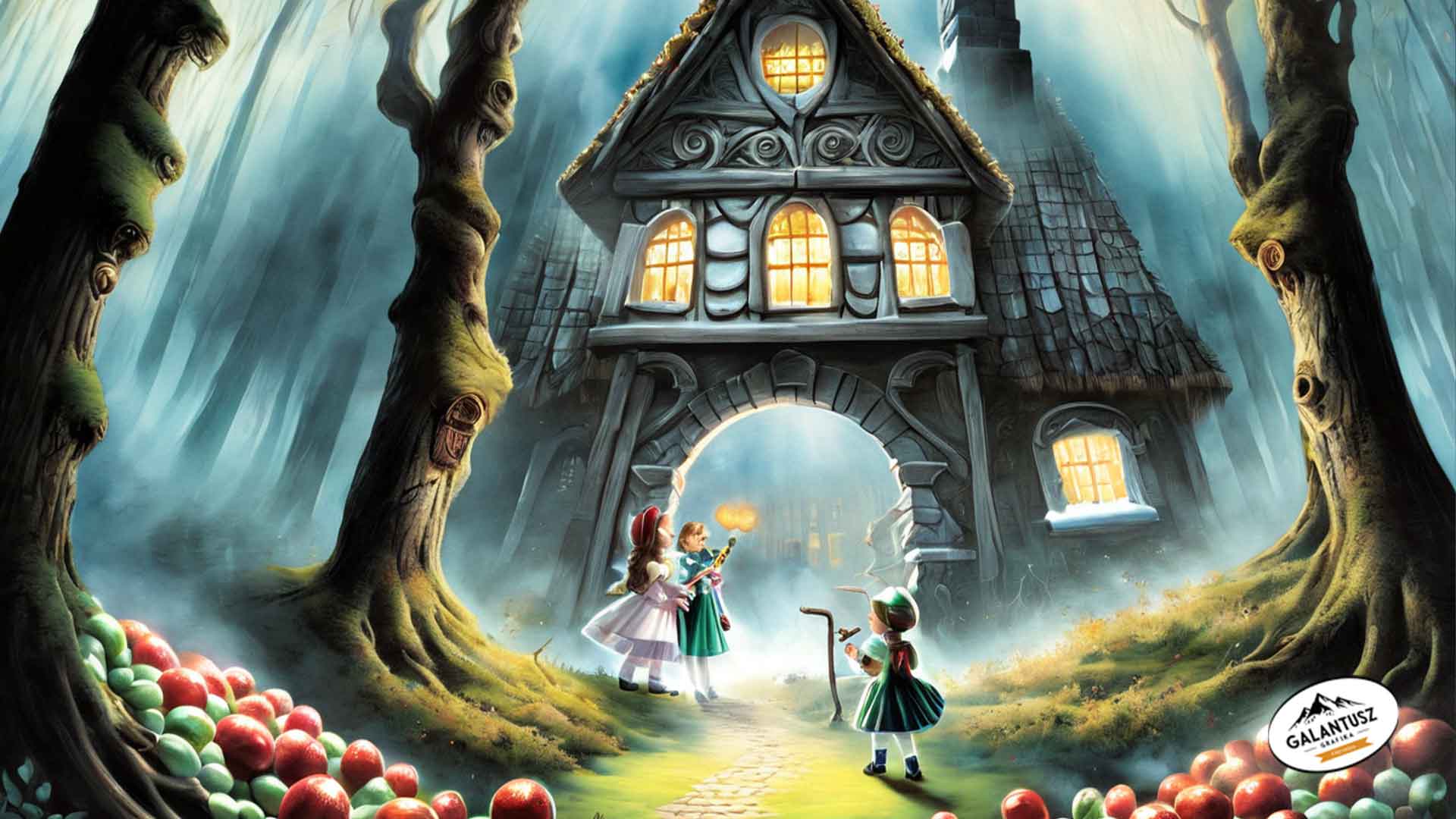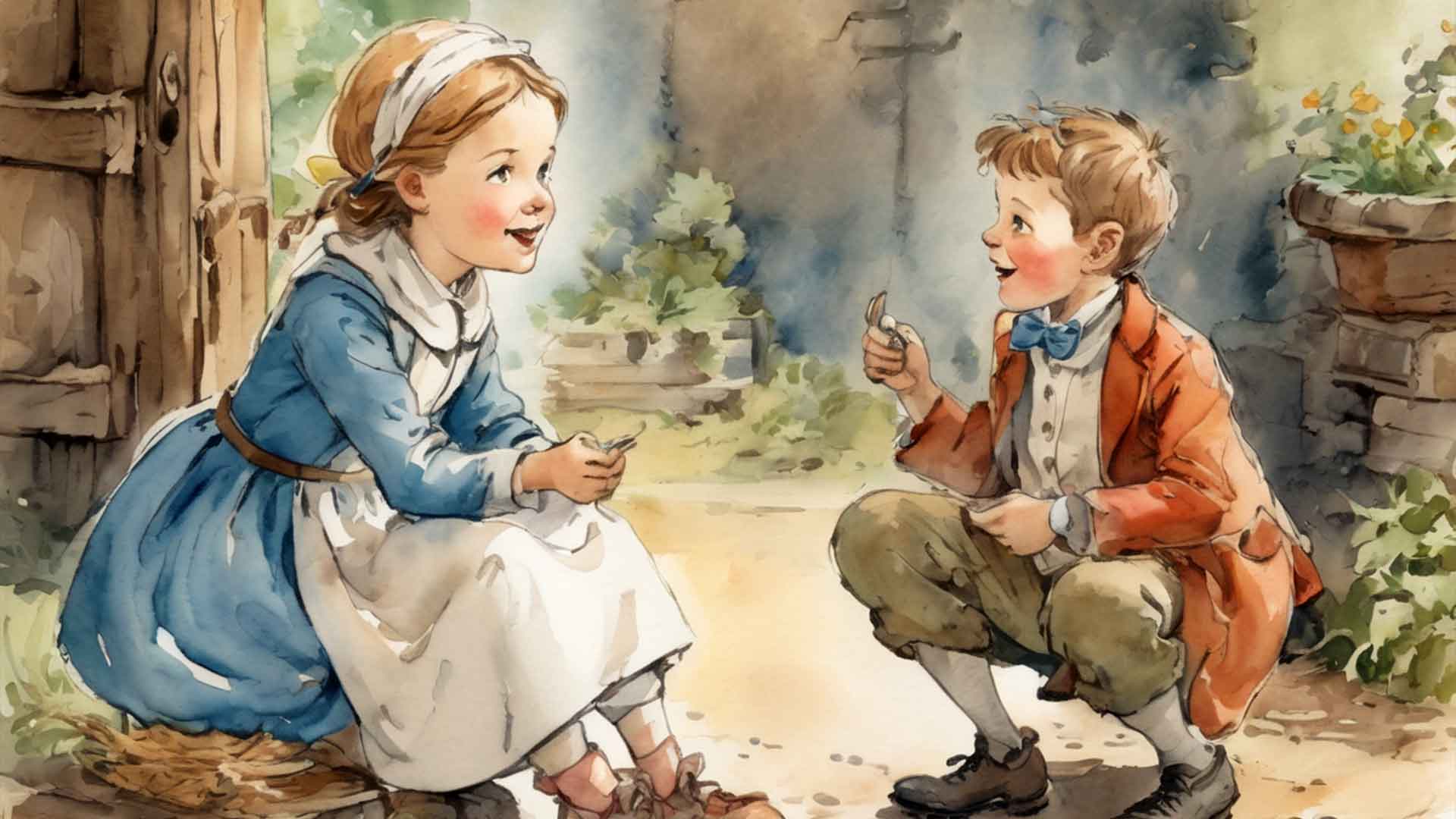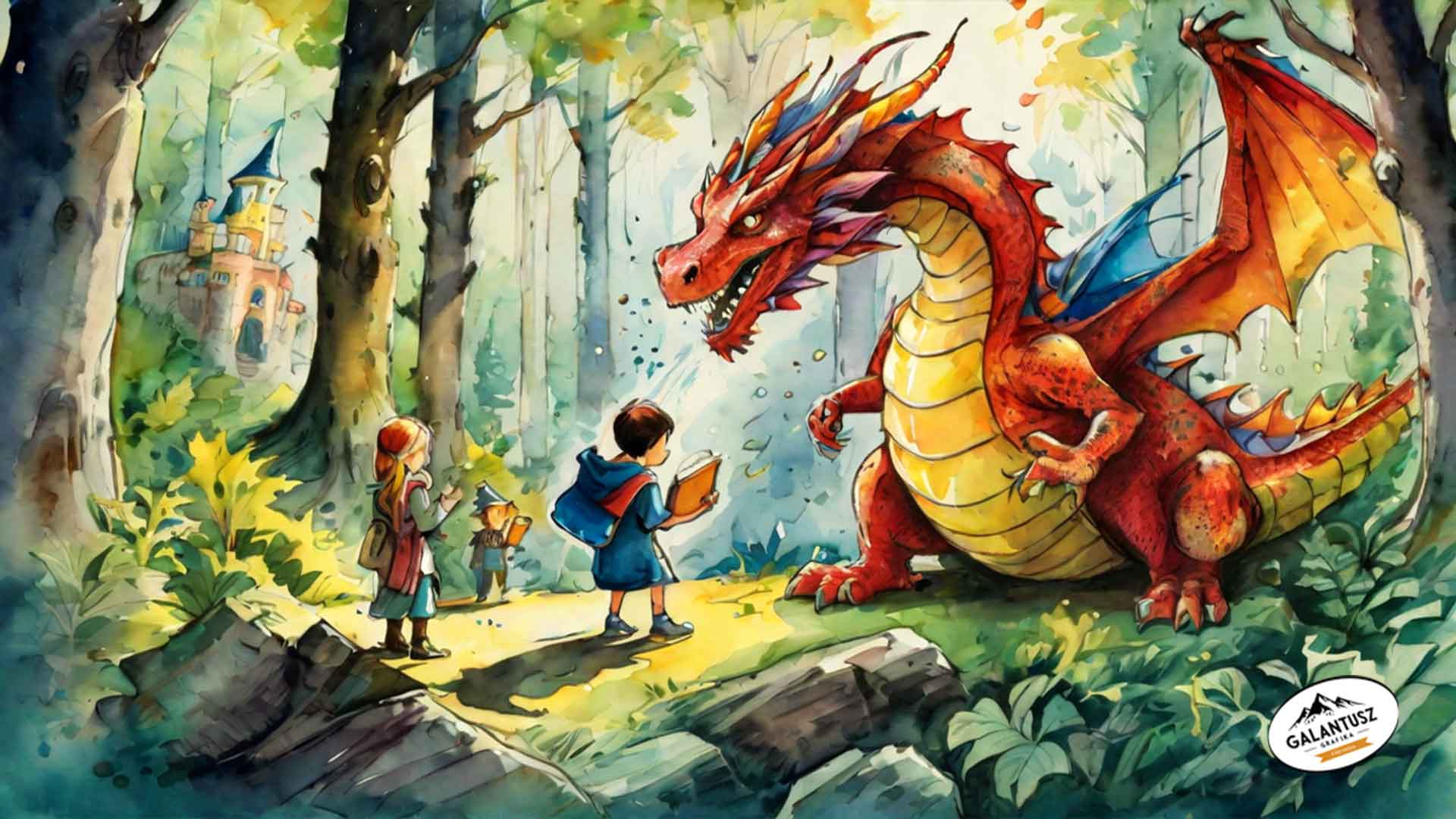Children's book illustration is an exciting and creative field where art meets storytelling. In this post, we offer detailed tips for those who want to master the art of illustrating children's books and provide guidance on how to take the first steps in this career.
1. Persistence – Success Does Not Come Overnight
The world of children's book illustration is highly competitive, and talent alone is often not enough to succeed. The importance of persistence cannot be overstated in this field, where progress and recognition are often only achieved over the long term.
Personal Development and Practice
Each children's book illustrator's career progresses in a unique way, but a common feature is the necessity of continuous learning and practice. In addition to developing drawing skills, it is important to master various illustration techniques. Digital tools and software, such as Adobe Photoshop or Illustrator, are now essential for modern illustrators. Traditional techniques like watercolor, pastel, or charcoal drawings remain popular and their combination can lead to the creation of new, unique styles.
Style and Technique Development
Developing your own style is a time-consuming process that requires persistent work and many trials. Illustrators often spend years finding the visual language that best expresses them. This process includes studying the works of renowned artists, critically analyzing one's own works, and continuously experimenting.
Networking
Building and maintaining professional connections is crucial for children's book illustrators. Participating in exhibitions, workshops, and conferences provides opportunities to introduce oneself, learn from others, and possibly secure agency representation. Social media and online platforms, such as Behance or DeviantArt, also allow illustrators to reach a wider audience and receive direct feedback on their work.
Continuous Improvement
Achieving recognition and success in the field of children's book illustration rarely happens quickly. Often, it takes years of persistent work and a commitment to continuous improvement for an illustrator to achieve their goals. Managing rejections and challenges, as well as maintaining a positive attitude, are key on this path.
In summary, persistence is one of the most important virtues in the world of children's book illustration. Along with talent, continuous learning, style development, nurturing professional relationships, and patience all contribute to long-term success.

2. Inspiration Everywhere – Open Your Eyes!
For children's book illustrators, inspiration is a key element of the creative process. Everything around us can be a potential source of inspiration, whether it's a melody, a scene from a movie, or an interesting pattern on a piece of clothing. It's important for illustrators to keep their eyes open to the world and notice these creative impulses that can spawn new ideas.
Everyday Details
The hidden beauties of everyday life often serve as inspiration. An illustrator shared how a simple walk in the park or observing urban life can provide many new ideas. For example, the colors of nature or interactions between people can inspire the design of new characters or scenes.
Music and Art
Many illustrators can visualize scenes or characters while listening to music, which may later appear in their work. Visiting art galleries can also offer fresh perspectives, showcasing new styles and techniques that are tempting to try.
Digital Platforms and Social Media
Social media platforms like Pinterest, Instagram, and Tumblr are exceptional sources of inspiration. These platforms enable illustrators from around the world to share their work, which can be inspiring for their peers. Pinterest is particularly popular among illustrators as it allows them to create and collect idea boards related to various themes and illustrations.
Capitalizing on Everyday Inspiration
The key is that inspiration often hides where we least expect it. Children's book illustrators, who walk through the world with open eyes and minds, often encounter new and inspiring ideas. These ideas can enrich their creations and contribute to producing fresh and original works. Recognizing and exploiting inspiration is essential for successful children's book illustration.
3. Don't Think, Just Draw! – The Freedom of Creativity
In the realm of children's book illustration, spontaneity and direct creation often lead to the most captivating and creative works. Over-planning and preconceived expectations can easily hinder an artist's creative flow, so it's important to sometimes just let the pencil lead the way.
Unleashing Creativity
A renowned children's book illustrator shared that one of the most valuable methods for unleashing creativity is to think less about the end result and let the creative process unfold naturally. This approach helps dissolve creative blocks and allows for the emergence of new, fresh ideas.
Benefits of Spontaneous Drawing
Spontaneous drawing, as a technique, can be particularly useful when an illustrator feels stuck. Focusing on pure creation rather than overthinking can help discover new styles and forms, which can then be deliberately incorporated into later work. Often, the best works are born in these spontaneous, unexpected moments when the creator focuses solely on the present.
Encouraging Creativity
The philosophy of "Don't think, just draw!" can be particularly helpful for those who tend to be overly critical of their own work. This approach helps reduce the pressure often felt at the start of new projects and allows artists to experiment more freely and take risks.
Exercises for Developing Spontaneous Creativity
It may be useful for children's book illustrators to introduce some practices that promote spontaneous drawing. This could include daily "freehand" drawing sessions, where the illustrator spends a few minutes drawing without any constraints. Another method could be drawing while listening to music, which can help translate emotions and thoughts more directly onto paper.
This mindset can help illustrators unlock their inner creativity and explore the visual languages that best express them. The ability to "not think, just draw" is a valuable tool in every artist's arsenal, promoting continuous creative development and innovation.
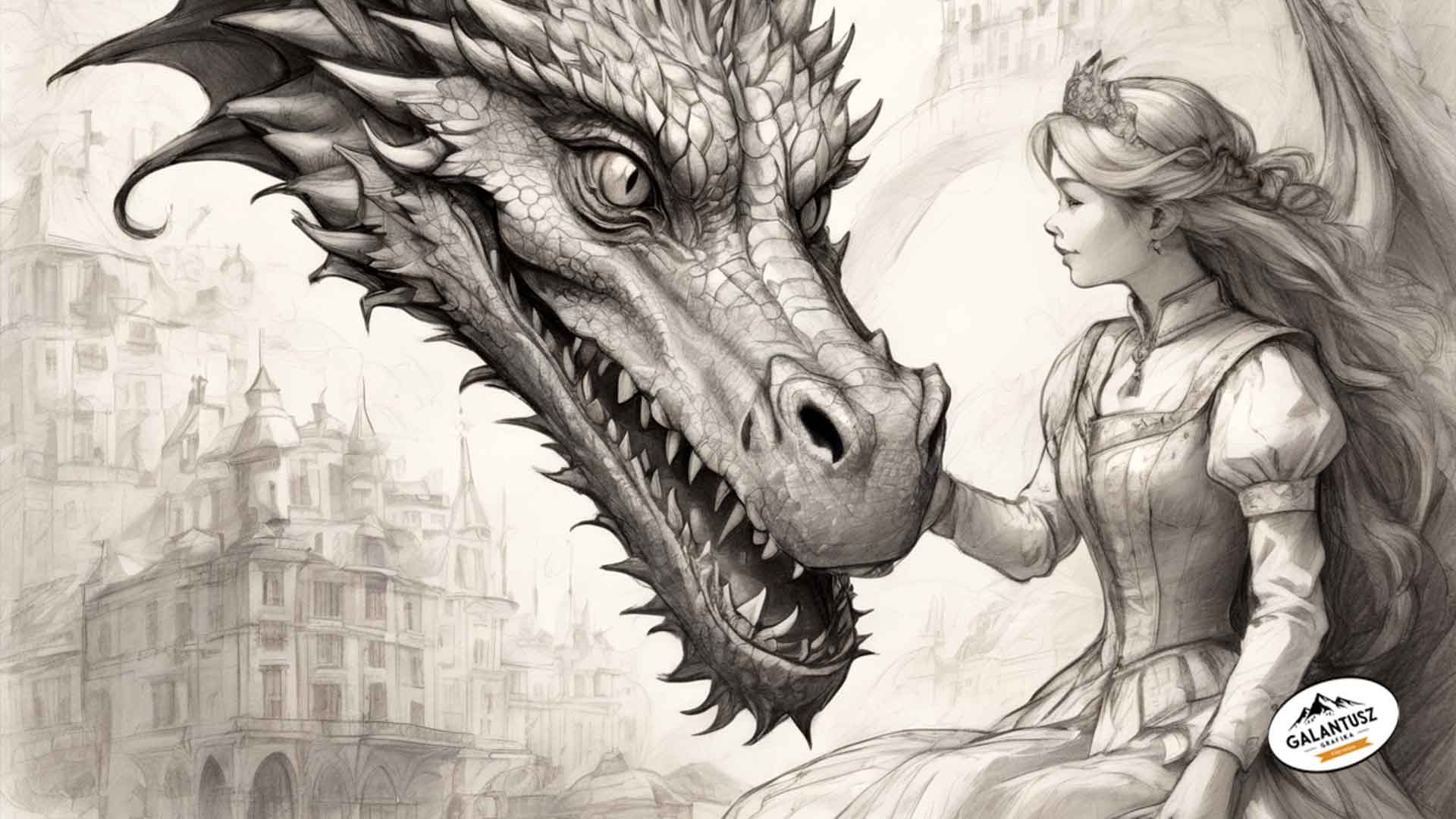
4. The First Sketches – They Don't Need to Be Perfect
In the process of children's book illustration, the importance of the first sketches cannot be overstated. These early experiments provide the foundation for the artwork's development and refinement and, while rarely perfect, are essential for the creative process.
The Role of First Sketches
First sketches offer illustrators the chance to experiment with their ideas without worrying about the quality of the final outcome. This freedom allows for the exploration of different compositional possibilities, character positions, and storytelling. The imperfection of the first sketches helps artists try multiple approaches before committing to a specific direction.
The Process of Development
It's important to understand that children's book illustration is an iterative process. From the first sketches, the work continuously evolves as the illustrator reevaluates and refines ideas. This process provides an opportunity to improve the work based on critical feedback and fresh insights.
Handling Failures and Learning Opportunities
Initial sketches often do not meet the illustrator's initial expectations, but these "failures" provide excellent learning opportunities. Learning from each sketch helps illustrators better understand their own style and the technical aspects of their art. Additionally, these early attempts help illustrators become more resilient to failures and better manage frustration.
Encouragement for Further Work
Illustrators should be encouraged to accept the imperfections of the first sketches as part of the process. The ability of an illustrator to move beyond the first, imperfect sketches is a crucial step in their artistic development. This attitude helps continuously improve and refine artistic skills.
First sketches are not just the foundations of the artwork but also the cornerstone of creative growth and development. The fact that these sketches are not perfect is not only natural but necessary for the creative process.
5. Work Style – Find Your Style
Finding your style is crucial for every illustrator. Each artist achieves the best results using different methods. Some prefer traditional, hand-drawn techniques, enjoying the direct contact of pencil and paper, while others favor modern technology, such as digital tablets and software, which offer quicker modifications and a wider range of creative possibilities.
Developing Work Style
When developing a work style, it's important to experiment with various techniques. Try watercolor, acrylic, charcoal, or work with digital tools like Photoshop or Procreate. Throughout this process, observe which techniques feel most natural to you and allow you to express yourself most easily.
Developing a style is not just a technical question. It's also a journey of discovery where you learn about your own preferences, strengths, and creative boundaries. This path helps create works that truly reflect your personality and creative goals. Finding your style enables you to develop distinct and recognizable signals in the world of visual arts.
6. Another Pair of Eyes – Criticism and Feedback
Criticism and feedback are essential elements of a children's book illustrator's development process. Constructive feedback enables artists to discover new perspectives, improve their techniques, and refine their works.
The Importance of Criticism
When an illustrator shares their work with others, they gain the opportunity to see their creations from a fresh perspective. Other artists, colleagues, or even members of the target audience can provide valuable feedback, helping to identify the strengths and weaknesses of the work. This type of interaction can be particularly important for an illustrator to further hone their style and techniques.
Collecting Feedback
Art communities, online forums, and social media platforms are excellent places to collect feedback. Participating in group workshops, online courses, or simply sharing work on social media provides opportunities for other professionals and enthusiasts to offer constructive criticism. These platforms allow illustrators to learn from each other, draw inspiration from others' work, and receive constructive feedback.
Handling Feedback Constructively
It's important for illustrators to be open to criticism and able to process it constructively. Handling negative feedback can be challenging, but if an artist can learn from it and use it constructively, it can significantly contribute to their artistic development. Criticism is not an attack but an opportunity for growth and improvement.
Integrating Feedback
Incorporating valuable feedback into the workflow can help illustrators avoid repeating mistakes and continually improve in their art. An illustrator's ability to consider criticism and apply what they've learned is crucial for building a successful and long-term career.
Overall, fresh perspectives and constructive feedback are necessary for a children's book illustrator to develop and perfect their skills. Properly handling and integrating criticism and feedback into the workflow enables illustrators to create their best work.
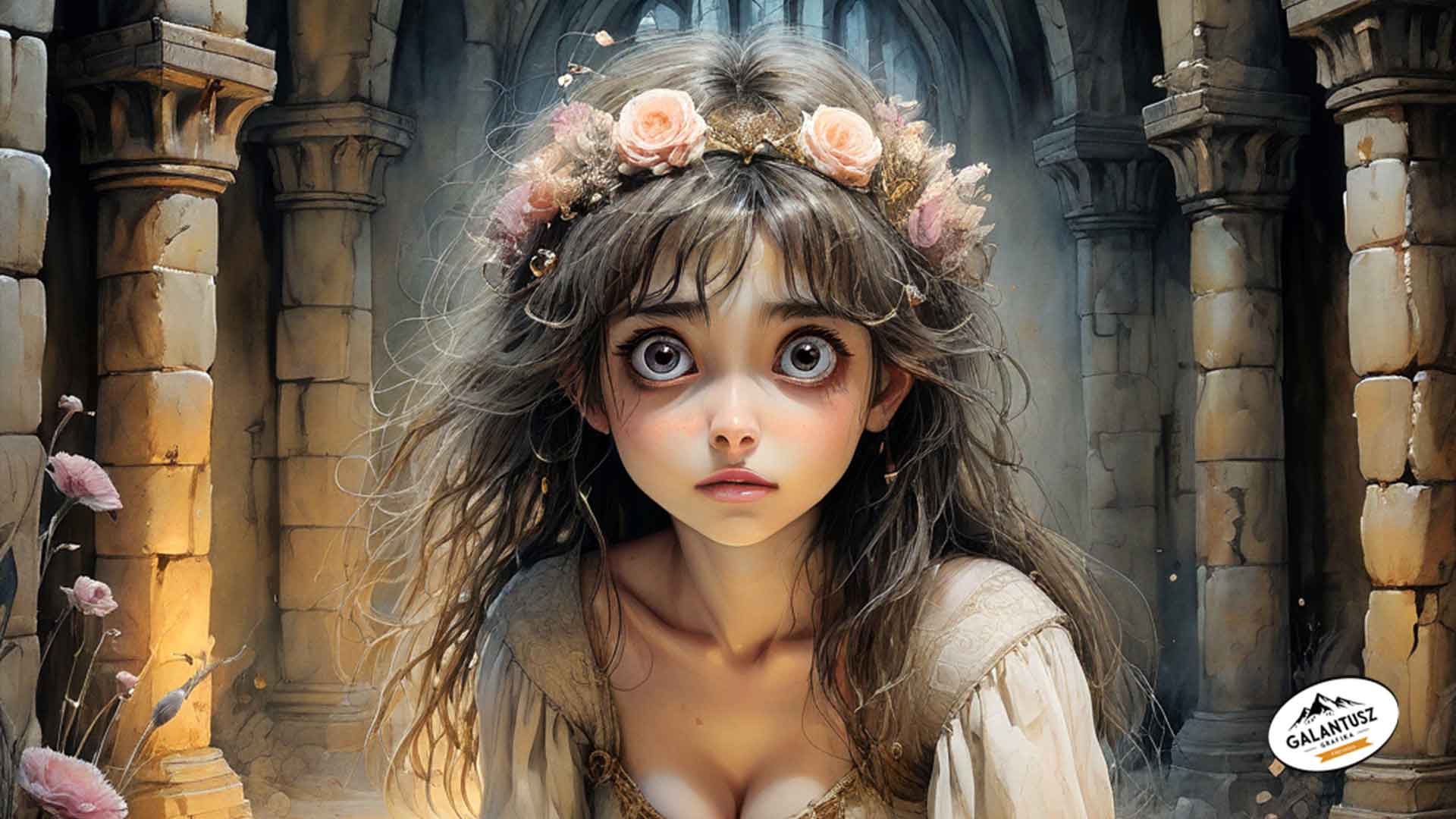
7. Further Reading and Resources
Continuous learning and inspiration are very important for children's book illustrators to stay fresh and relevant in the rapidly changing art world. Here are some suggestions on how to expand their knowledge and sources of inspiration.
Professional Books
Reading professional books provides illustrators the opportunity to deepen their understanding of artistic theories, techniques, and art history. Books like "Illustrating Children's Books" by Martin Salisbury offer detailed insights into the techniques of creating illustrations and strategies for success in the children's book market. "Drawing and Painting Animals" by Tim Pond can help in the authentic depiction of animal figures, a frequent theme in children's books.
Art Exhibitions and Galleries
Visiting art exhibitions can be inspiring and provide an opportunity for artists to admire artworks in person. Learning about different styles and techniques helps illustrators develop their own style and draw new ideas. Such experiences can often awaken creativity and put known techniques in a new light.
Workshops and Online Courses
Participating in art workshops or online courses is a great way to develop skills and learn new techniques. Online platforms like Skillshare or Udemy offer numerous courses that can help illustrators master digital illustration techniques.
Professional Groups and Communities
Joining communities of illustrators, such as online forums or local art groups, provides opportunities to share experiences and knowledge. These communities offer a supportive environment where illustrators can learn from each other, share their work, and receive valuable feedback.
These resources help illustrators expand their horizons, refresh their idea stores, and continuously develop in the art of children's book illustration.
The tips mentioned above aim to assist you in the artistic and technical aspects of illustrating children's books, whether it's developing your style, finding inspiration, or handling criticism constructively. Illustration is not just the art of drawing; it's a form of storytelling where the images themselves tell the stories.
If you need specific assistance in realizing your own children's book, Galantusz Graphics is ready to support you on this journey. Our team has years of experience in illustrating children's books and has the necessary experience and creativity to help bring your stories to life visually.
Why choose us?
- Personalized Approach: Every story is unique, and we create illustrations accordingly, considering the mood of the story and the target audience.
- Quality: Whether it's traditional or digital techniques, our team works at a high level to ensure that the end result exceeds your expectations.
- Interactive Collaboration: We work with you at every step of the process, ensuring that the illustrations perfectly reflect the spirit of your story.
Choose us, and we'll help your stories not only be told but also visually reach and touch the audience. For more information, visit our website or contact us directly to discuss how we can successfully carry out our project together. Let Galantusz Graphics help bring your stories to life!




